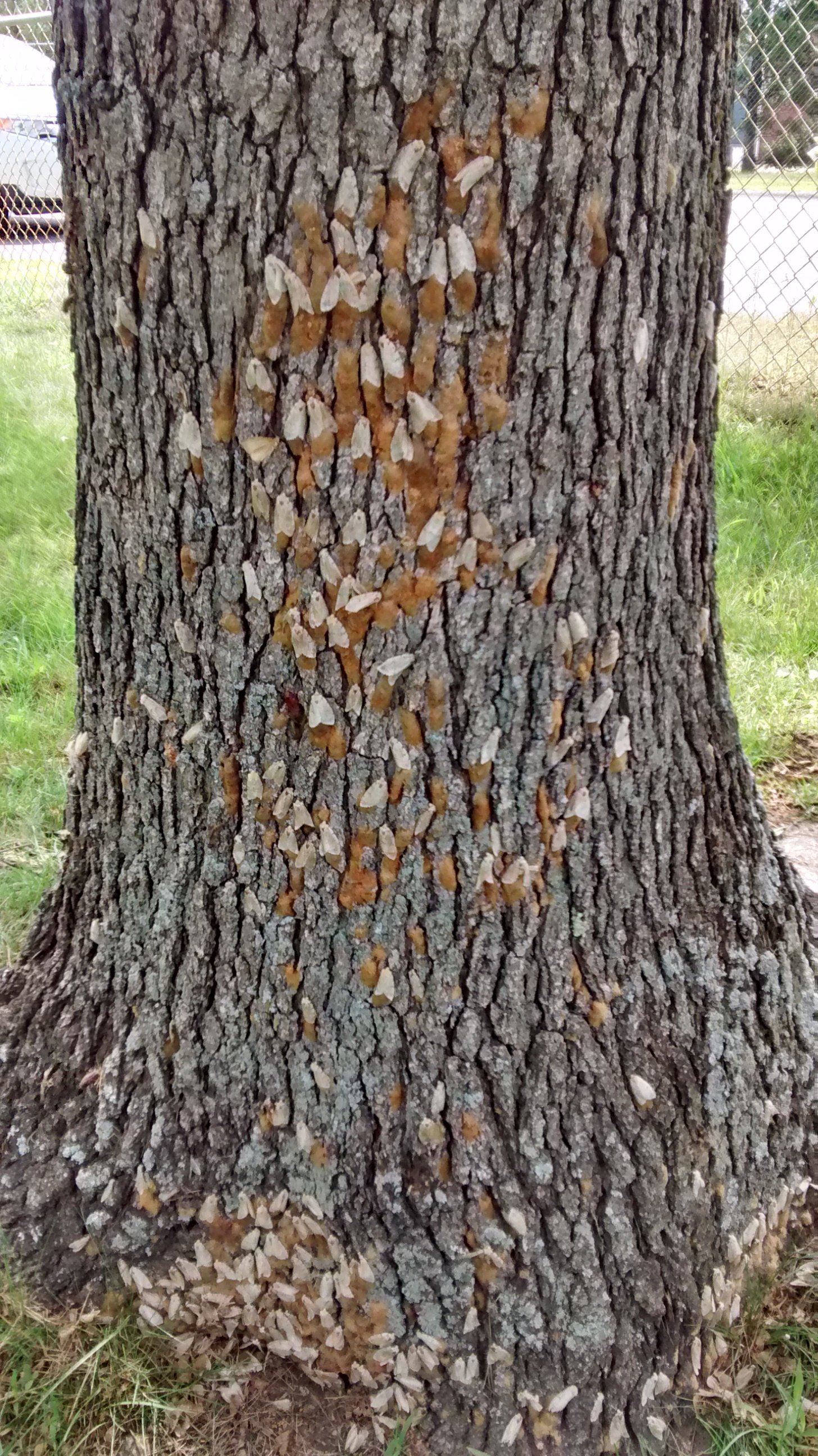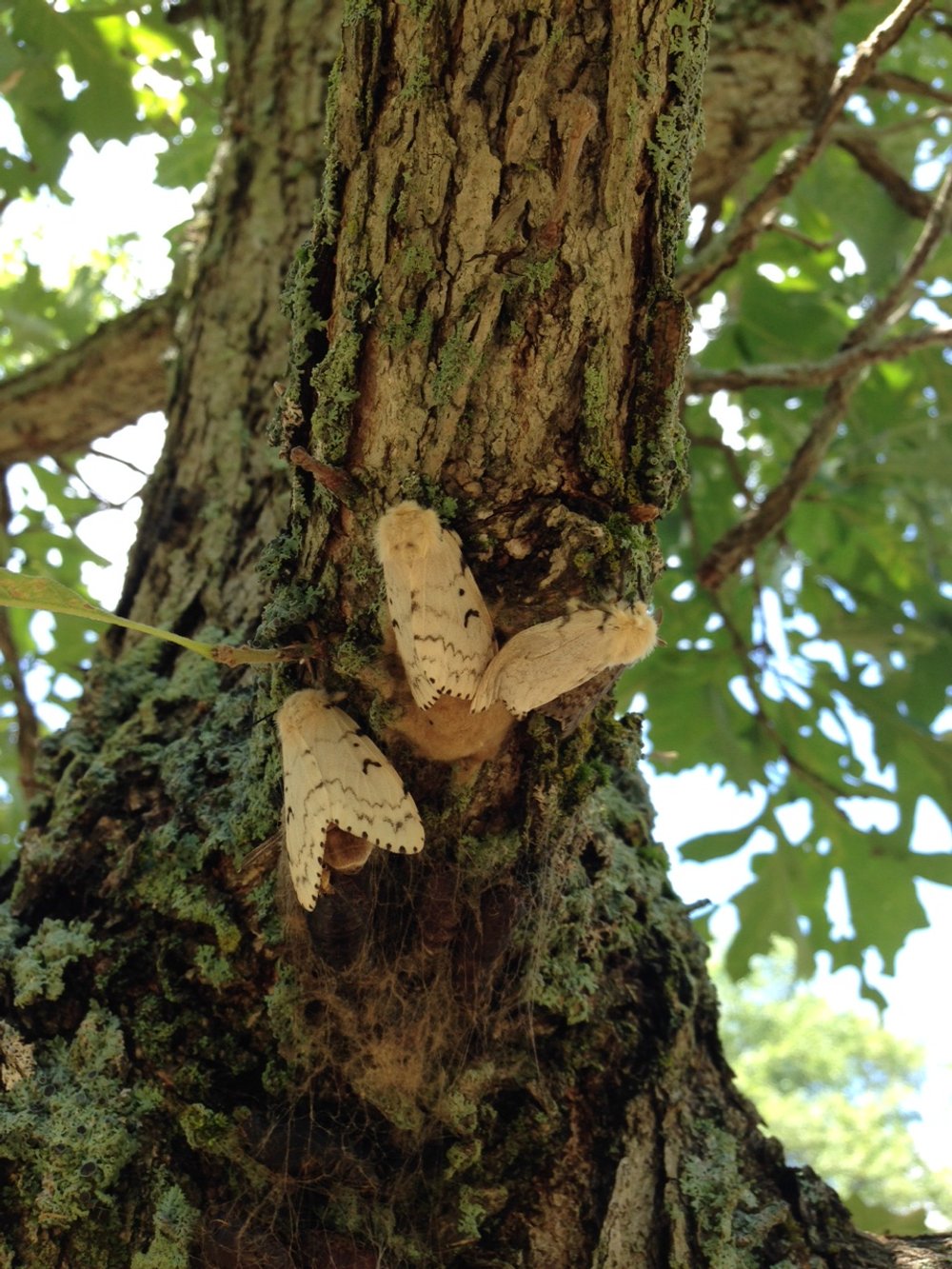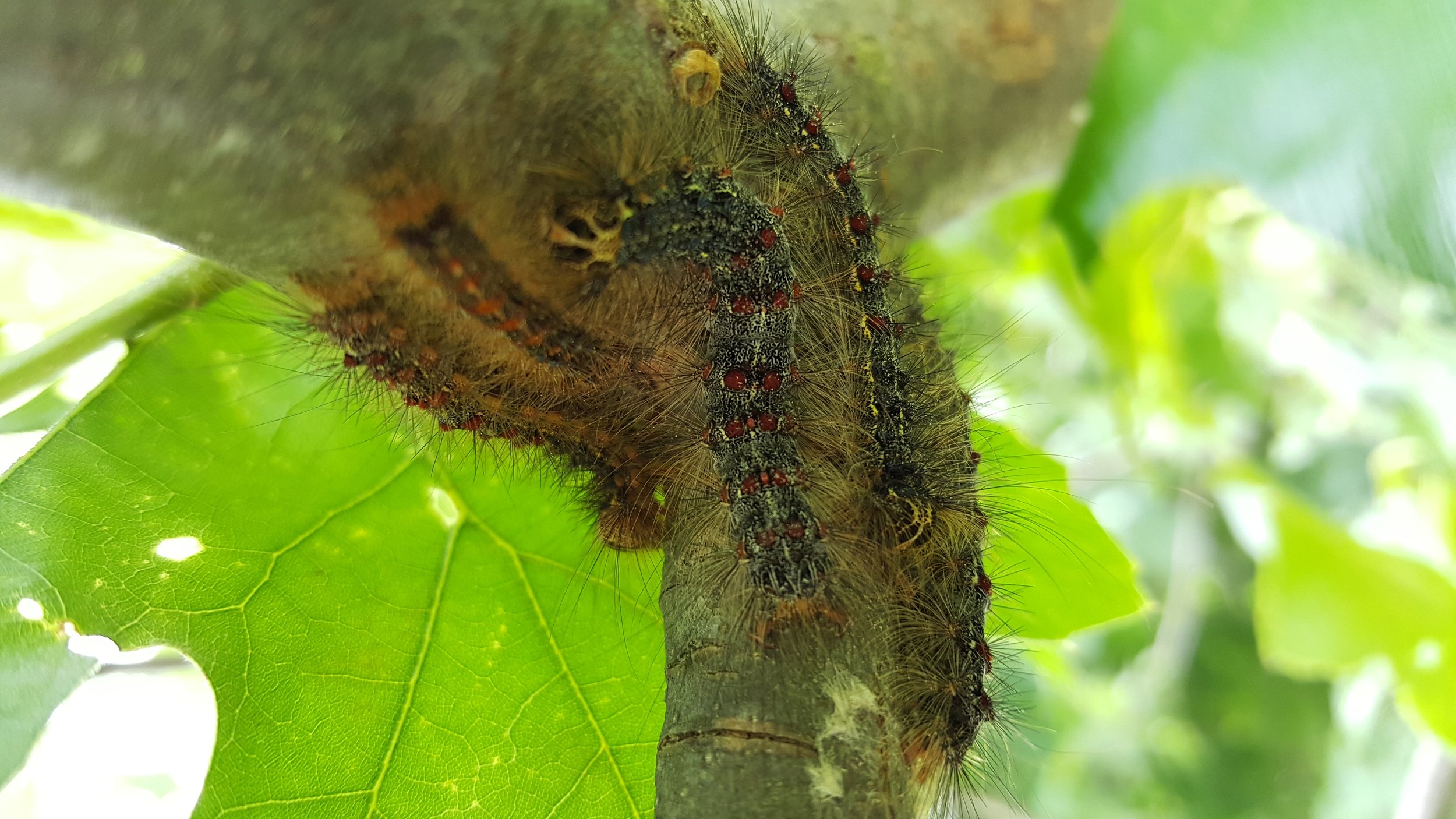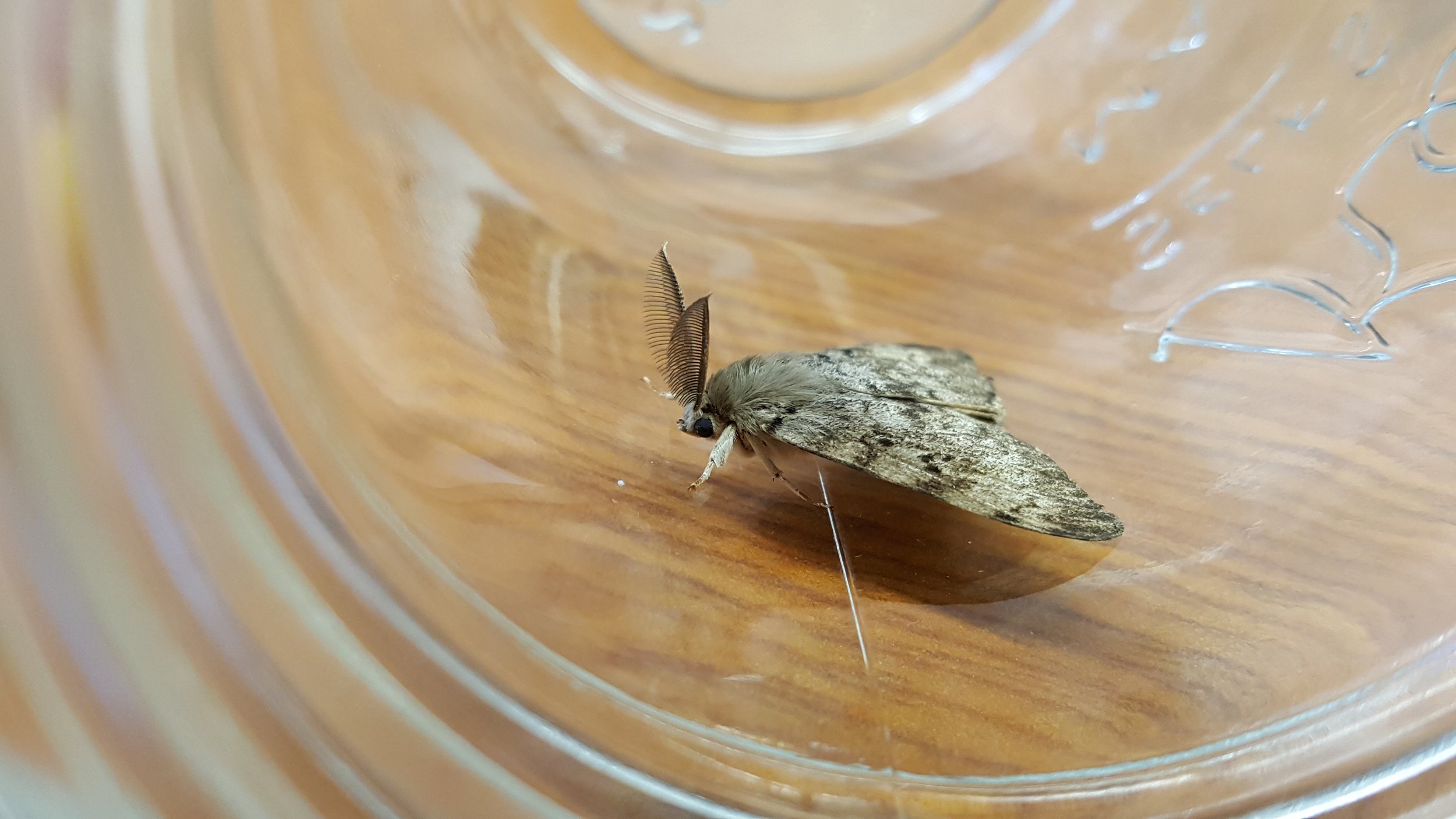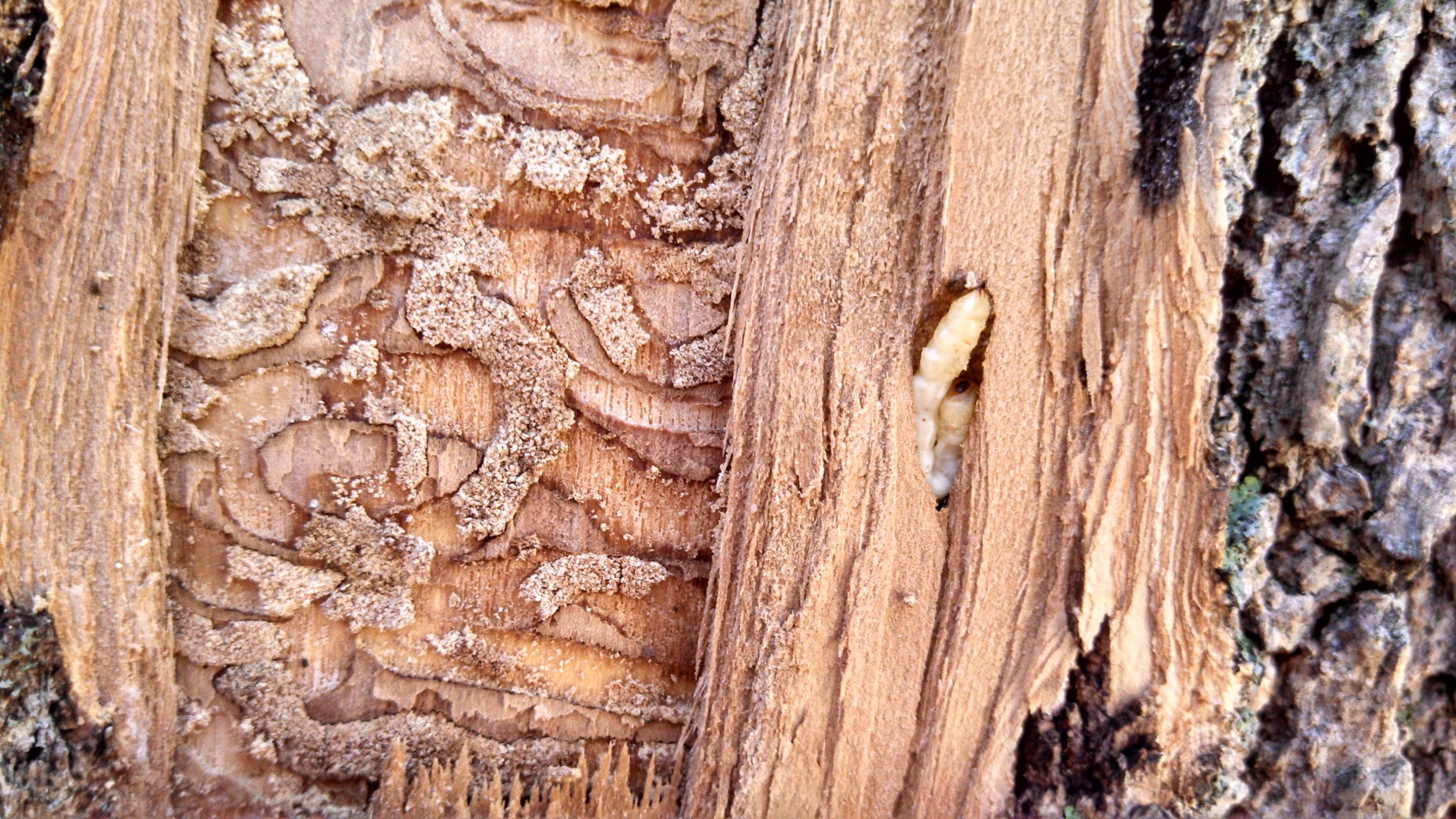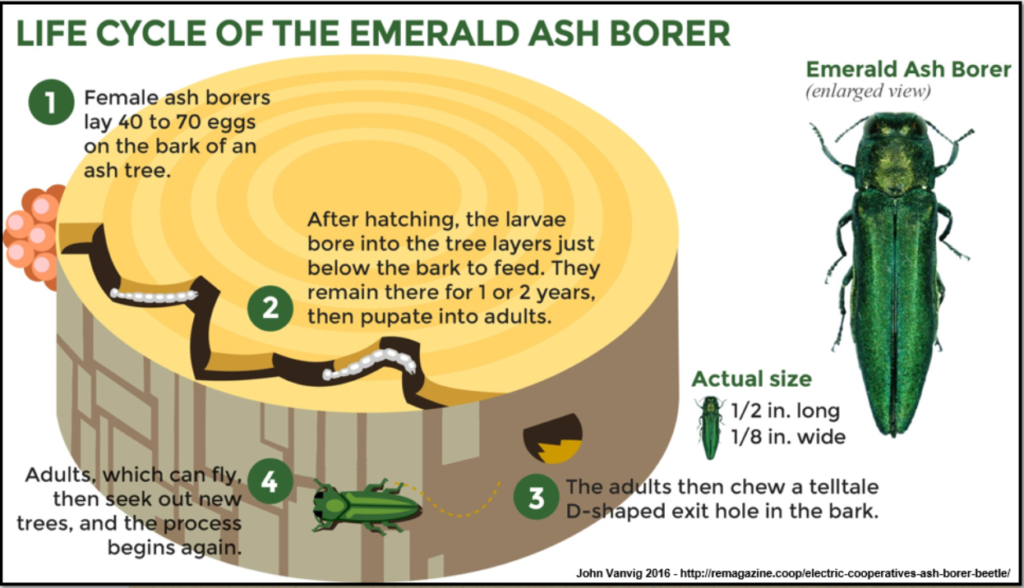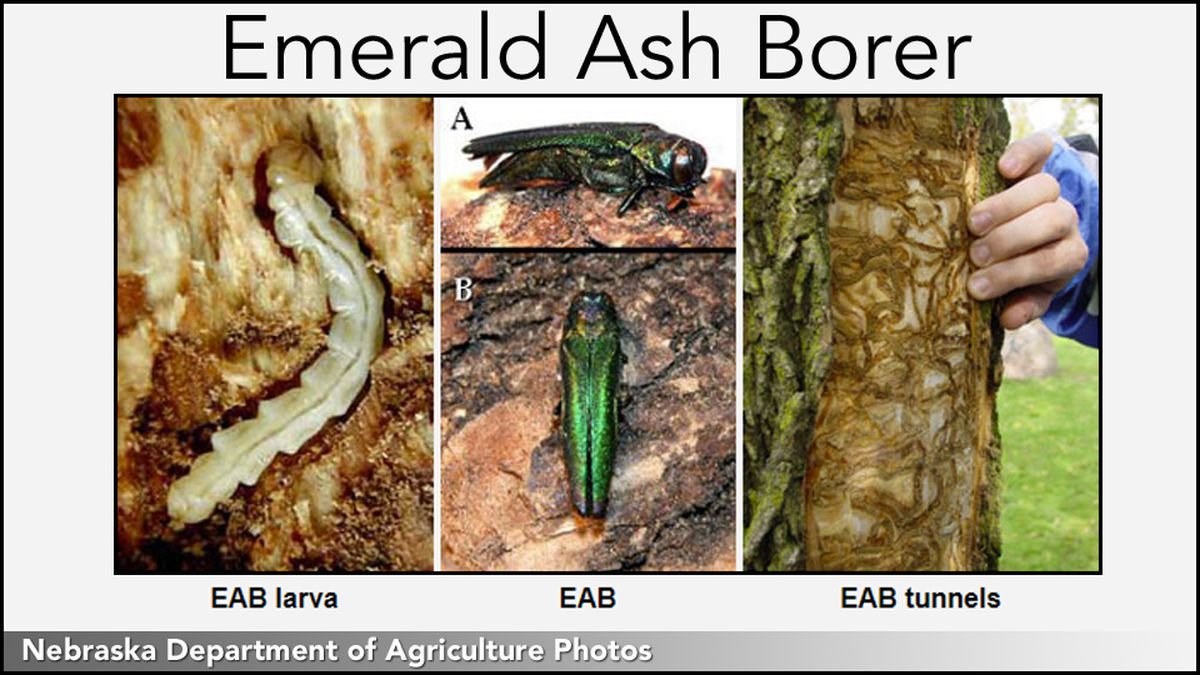Pest Alerts...
SPONGY MOTH [formerly gypsy moth]
Pest: Lymantria dispar (formerly Gypsy Moth)
Order : Lepidoptera
Family : Erebidae (formerly the Lymantriidae)
Lymantria dispar, the insect formerly known as gypsy moth, accidentally escaped the home of E. Leopold Trouvelot and was introduced into the US in Medford, Mass. in the late 1860’s. He had intentionally brought it to his home in Massachusetts, from France, to study the insect with an interest in silk production. Since then, Lymantria dispar has spread throughout the Northeast and well beyond. It can be a serious pest of trees and a nuisance due to the irritating hairs on its body and the copious amount of excrement (frass) that it produces in high population years.
For additional information, please see: https://ag.umass.edu/landscape/fact-sheets/lymantria-dispar-formerly-gypsy-moth
Emerald Ash Borer
Data provided by UMass Extension Landscape, Nursery and Urban Forestry Program
Pest: Agrilus planipennis (Fairmaire)
Order: Coleoptera
Family: Buprestidae
The emerald ash borer (EAB) is a non-native, invasive insect that was first discovered in North America in 2002 in Michigan. It is native to eastern Russia, northern China, Japan, and Korea. EAB utilize ash (Fraxinus spp.) as their primary hosts. However, emerald ash borer was found attacking and developing in white fringe tree (Chionanthus virginicus) in Ohio and has most recently been confirmed as able to feed and develop successfully on cultivated olive (Olea europaea). In fact, Cipollini et al. 2017 note that the success of EAB development in cultivated olive is higher than in more resistant native Fraxinus spp. hosts, such as Manchurian ash (F. mandshurica); however, EAB does not develop as successfully in olive as it does in favored North American ash species. In Massachusetts, the primary host trees are white ash (Fraxinus americana), green ash (Fraxinus pennsylvanica), and black (or brown) ash (Fraxinus nigra). As a component of Massachusetts forests, the highest percentages of ash are located in Berkshire County, but these trees are also found in forested areas throughout the state. Ash is also a popularly planted tree in the urban environment.
For additional information, please see: https://ag.umass.edu/landscape/fact-sheets/emerald-ash-borer
ticks:
Over the last few years we have seen the tick population increase dramatically and there are now state agencies organizing preventative information. Below is a video that outlines the kind of ticks, preventative measures & some of the diseases that the ticks can carry. You can visit https://tickencounter.org for information & preventative measures.

